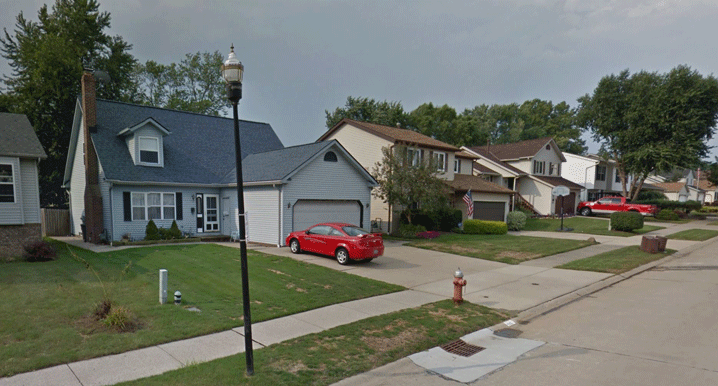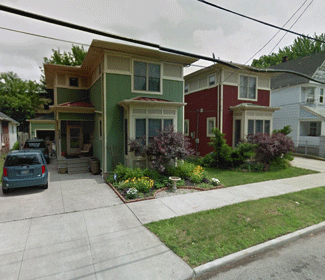 |
Planning Home | Zoning Overview | Density |Ohio City Zoning History | Urban Overlay | Ideal City |
What Density Means
Homes in Cleveland's So-Lo neighborhood that are illegal "Density can be a controversial term. Increased density is feared by those who imagine ugly buildings, overshadowed open space, - Ann Forsyth, Measuring Density: Working Definitions for Residential Density and Building Intensity
"In describing the quality of a neighborhood, dense is not a very expressive term. It doesn't reveal how the neighborhood appears or how it feels. A dense neighborhood could be crowded and unpalatable, or it could be lovely. How we perceive density has everything to do with how it is designed, not the actual ratio of units to acres." - Visualizing Density by Julie Campoli and Alex MacLean
Harrison Park is an example of a new dense, walkable, mixed-use neighborhood. Homes placed close to the street with raised front porches, active living space on the first story and quality architectural detail creates safe and beautiful city streetscapes that encourage walking and neighborly interactions. Density, when well designed, will create the conditions that lead to safer and more sustainable neighborhoods. Increased density also means city services such as snowplowing, trash services and RTA can operate more efficiently.  Harrison Park, Columbus Ohio
Ohio City is an example of an historic dense, walkable, mixed-use neighborhood. Many of the homes and buildings were built before the Cleveland zoning code was enacted in 1929. Neighborhoods like Ohio City are often looked to as examples by New Urbanists who are designing neighborhoods such as Harrison Park.

Residences in the Ohio City Neighborhood which are dense but illegal under the current zoning (above).  Sherly Drive in the Old Brooklyn Neighborhood.
|
